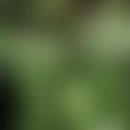Synonym(s)
DefinitionThis section has been translated automatically.
Ingredient of Glycycrrhiza glabra Linné the liquorice shrub. Pentacyclic triterpenic acid with steroidal basic structure, without glucocorticoid, but with mineralocorticoid and slight saponin-like(but hardly any haemolytic) effect. Glycyrrhetinic acid is mainly found in the roots of the shrub (liquorice root).
Glycyrrhetinic acid is used in cosmetic formulations. It is used as hair conditioning agent and as skin care product. The substance also has antibacterial effects (Oyama K et al. 2016)
Glycyrrhetinic acid is the aglycone of glycyrrhizin.
Field of application/useThis section has been translated automatically.
Glycyrrhetinic acid is used medicinally to treat ventricular ulcers and gastritis. There are no official monographs for these indications.
Note(s)This section has been translated automatically.
Glycyrrhetinates are the esters/salts of glycyrrhetinic acid.
LiteratureThis section has been translated automatically.
- Chen HJ et al (2014) Glycyrrhetinic acid suppressed NF-κB activation in TNF-α-induced hepatocytes. J Agric Food Chem 62:618-625.
- Ebrahimnezhad S et al (2016) Decline in Immunological Responses Mediated by Dendritic Cells in Mice Treated with 18α-Glycyrrhetinic Acid. Immunol Invest 45:191-204.
- Jiang L et al (2013) Discovery of glycyrrhetinic acid as an orally active, direct inhibitor of blood coagulation factor xa. Thromb Res 133:501-506.
Oyama K et al (2016) Antibacterial Effects of Glycyrrhetinic Acid and Its Derivatives onStaphylococcus
aureus. PLoS One 11(11):e0165831.- Zou LW et al (2016) Design, synthesis, and structure-activity relationship study of glycyrrhetinic acid derivatives as potent and selective inhibitors against human carboxylesterase 2 Eur J Med Chem 112:280-288.




